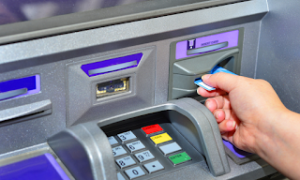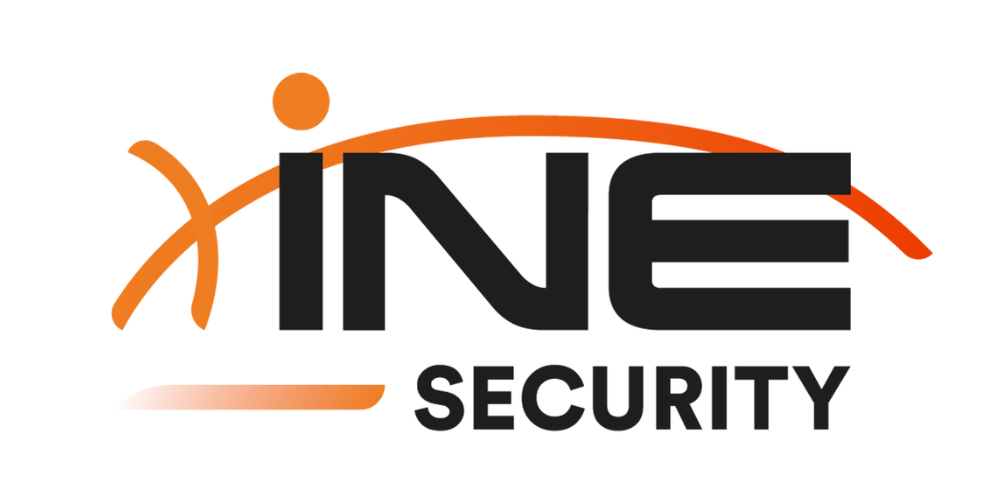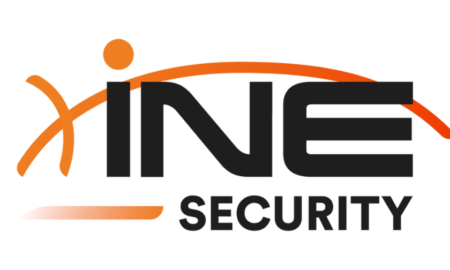The concept of smart homes has emerged as a beacon of innovation and sustainability. Smart home technology, encompassing interconnected devices and automation systems, holds immense potential to revolutionize how we manage energy consumption in our living spaces.
By harnessing the power of data-driven insights and intelligent control strategies, smart homes offer a promising pathway to reducing energy waste, lowering utility costs, and mitigating environmental impact. In this article, we’ll talk about the intricacies of smart home technology and explore how it enables us to create more efficient, comfortable, and environmentally-friendly living environments.
What is Smart Home Technology?
A smart home integrates various devices and systems that are interconnected and can be remotely monitored, controlled, and automated. These devices utilize advanced technologies such as sensors, actuators, and internet connectivity to enhance the functionality and efficiency of traditional home systems. Understanding the components and workings of smart home technology is essential for comprehending its role in energy conservation.
Smart Thermostats
These devices regulate indoor temperatures based on user preferences and environmental conditions. Equipped with sensors, they can detect occupancy, humidity, and ambient temperature, adjusting heating and cooling systems accordingly. Smart thermostats often feature learning capabilities, adapting to user behavior over time to optimize energy usage.
Smart Lighting
Smart lighting solutions include LED bulbs, fixtures, and control systems that enable users to adjust brightness, color, and scheduling via smartphone apps or voice commands. Motion sensors and ambient light detectors enhance energy efficiency by automatically turning lights on or off as needed, minimizing unnecessary usage.
Smart Appliances
From refrigerators to washing machines, smart appliances are equipped with internet connectivity and advanced features for energy management. They can be programmed to operate during off-peak hours when electricity rates are lower, and some models offer energy consumption feedback to help users make informed decisions about usage.
How Smart Home Systems Work
Jessica Shee of m3datarecovery.com, Smart home devices are embedded with sensors that collect data on environmental conditions, occupancy, and user preferences. This data is processed by automation systems, which execute predefined commands or adjust settings in real-time based on programmed algorithms. For example, a smart thermostat may lower the temperature when no one is home or increase it before occupants return.
Most smart home devices can be controlled remotely via smartphone apps or web interfaces, allowing users to monitor and manage their homes from anywhere with an internet connection. Additionally, many systems support integration with virtual assistants like Amazon Alexa or Google Assistant, enabling voice commands for hands-free operation.
The Benefits
Smart home technologies offer a lot of benefits beyond energy conservation. Let’s take a look at a few:
Convenience
Smart home technology streamlines daily tasks and enhances convenience by automating repetitive actions and providing remote access to home systems. Whether adjusting the thermostat, dimming the lights, or checking security cameras, users can control their homes with ease from any location.
Security
Smart home security systems offer advanced features such as motion detection, video surveillance, and remote monitoring, enhancing home safety and providing peace of mind to occupants. Integration with smart locks and doorbell cameras enables secure access control and real-time alerts for suspicious activity.
Accessibility
Mina Daryoushfar of Rugsource said, for individuals with disabilities or mobility issues, smart home technology can significantly improve accessibility and independence. Voice-controlled interfaces, automated lighting, and adjustable appliances empower users to customize their living environments to suit their unique needs.
Understanding the fundamental concepts and benefits of smart home technology lays the groundwork for exploring its role in energy conservation. By leveraging the capabilities of interconnected devices and automation systems, smart homes contribute to more efficient energy usage, lower utility bills, and a greener planet.
Energy Consumption in Traditional Homes
Traditional homes, characterized by conventional building designs and standard appliances, often exhibit inefficient energy usage patterns that contribute to higher utility bills and environmental impacts. Understanding the factors influencing energy consumption in these homes is crucial for identifying opportunities for improvement and transitioning towards more sustainable practices.
Heating and Cooling
One of the largest contributors to energy consumption in traditional homes is heating and cooling systems. Inefficient HVAC (Heating, Ventilation, and Air Conditioning) systems, coupled with poor insulation and air leakage, result in significant energy losses as heating and cooling units work harder to maintain indoor comfort levels.
Lighting
Incandescent bulbs, commonly found in traditional homes, are notorious for their high energy consumption and short lifespans. Inefficient lighting fixtures and outdated technology contribute to unnecessary energy waste, particularly when lights are left on for extended periods or in unoccupied rooms.
Appliances and Electronics
Older appliances and electronics lack the energy-saving features and efficiency ratings of their modern counterparts, leading to excessive energy usage. Refrigerators, washing machines, televisions, and other household devices consume electricity even when in standby mode, known as phantom power or vampire energy.
Common Energy-Wasting Practices
Here are some common household practices that waste a lot of energy:
- Overheating or overcooling: In traditional homes, occupants often set thermostats to extreme temperatures, resulting in excessive heating or cooling that strains HVAC systems and drives up energy bills. Lack of zone control and manual thermostat adjustments contribute to uneven heating or cooling distribution throughout the home.
- Leaving lights and appliances on when not in use: Habitual behaviors such as leaving lights, televisions, computers, and other electronics on when not in use contribute to unnecessary energy consumption. In traditional homes, where automation and energy-saving features are limited, reliance on manual control exacerbates this issue.
- Using inefficient appliances and outdated technology: Aging appliances and outdated technology lack the energy efficiency standards of modern alternatives, consuming more energy to perform the same tasks. In traditional homes, where appliance upgrades may be infrequent due to cost considerations, inefficient appliances remain in use for longer periods, perpetuating energy waste.
Transitioning towards smart home technology, with its energy-saving features and automation capabilities, offers a viable pathway to reducing energy consumption, lowering utility costs, and mitigating environmental impact.
How Smart Homes Conserve Energy
Smart homes leverage advanced technologies and automation systems to optimize energy usage and reduce wasteful practices. By integrating smart devices and implementing intelligent control strategies, these homes can achieve significant energy savings while maintaining comfort and convenience for occupants.
We need to understand the mechanisms through which smart homes conserve energy. It’s essential for realizing their full potential in promoting sustainable living.
Adaptive Heating and Cooling
Smart thermostats, equipped with sensors and learning algorithms, play a pivotal role in optimizing heating and cooling systems for energy efficiency. These devices can detect occupancy, monitor indoor and outdoor temperatures, and adjust settings dynamically to minimize energy consumption while ensuring comfort.
Smart thermostats learn occupants’ preferences and daily routines, automatically adjusting temperature settings to optimize energy usage. By scheduling temperature setbacks during periods of inactivity or adjusting settings based on real-time occupancy, smart thermostats reduce unnecessary heating and cooling, resulting in significant energy savings.
Efficient Lighting Solutions
Smart lighting solutions, such as LED bulbs and fixtures, offer superior energy efficiency compared to traditional incandescent or fluorescent lighting. These bulbs consume less power, have longer lifespans, and can be controlled remotely via smartphone apps or automated schedules, allowing users to optimize lighting usage and minimize energy waste.
Smart lighting systems incorporate motion sensors, ambient light detectors, and scheduling features to minimize energy consumption. Lights can automatically turn off when rooms are unoccupied or adjust brightness levels based on natural light levels, reducing unnecessary usage and enhancing energy efficiency.
Smart Appliances
Smart appliances, equipped with energy monitoring features and connectivity capabilities, enable users to track and manage energy consumption more effectively. These appliances can provide real-time feedback on energy usage, allowing occupants to identify energy-intensive activities and adjust their behavior accordingly to conserve energy.
Smart homes can integrate renewable energy sources such as solar panels or wind turbines to further reduce their reliance on grid-supplied electricity. Smart energy management systems can optimize the use of renewable energy based on availability and demand, maximizing self-consumption and minimizing reliance on fossil fuels.
Data-Driven Insights
Matt Bigach, Founder of Nexus Homebuyers said, smart home systems collect data on energy usage from various devices and sensors, providing occupants with real-time insights into their energy consumption patterns. By visualizing energy usage trends and identifying areas of inefficiency, occupants can make informed decisions to reduce energy waste and optimize usage.
Advanced analytics and machine learning algorithms can analyze energy consumption data to identify trends, anomalies, and opportunities for improvement. By recognizing patterns such as peak usage hours or energy-intensive activities, smart home systems can suggest optimization strategies and automate energy-saving measures to enhance efficiency.
Challenges and Limitations
Despite the numerous benefits of smart home technology for conserving energy, several challenges and limitations must be addressed to maximize its effectiveness and adoption. From cost considerations to interoperability issues, overcoming these obstacles is crucial for realizing the full potential of smart homes in promoting energy efficiency and sustainability.
Cost Considerations:
One of the primary challenges of adopting smart home technology is the upfront cost of purchasing and installing smart devices and systems. While smart thermostats, lighting solutions, and appliances may have higher initial costs compared to their conventional counterparts, they offer long-term savings through reduced energy consumption and lower utility bills.
Governments, utilities, and organizations may offer incentives, rebates, or tax credits to encourage the adoption of energy-efficient technologies, including smart home devices. These incentives can help offset the initial cost and accelerate the adoption of smart home technology among consumers.
Compatibility Issues and Interoperability
Chris McDermott of ICLCP said, Tthe proliferation of smart home devices from different manufacturers has led to compatibility issues and interoperability challenges. Users may encounter difficulties integrating devices from different brands or protocols into a cohesive smart home ecosystem, limiting the functionality and effectiveness of their systems.
To address interoperability issues, industry standards such as Zigbee, Z-Wave, and Wi-Fi Alliance’s Wi-Fi HaLow are emerging to facilitate seamless communication between smart devices. Additionally, smart home platforms and hubs offer centralized control and interoperability features, enabling users to manage diverse devices from a single interface.
Privacy and Security Concerns
Smart home devices collect sensitive data on occupants’ behaviors, preferences, and usage patterns, raising concerns about privacy and data security. Implementing robust data protection measures, such as encryption, authentication, and secure communication protocols, is essential to safeguarding personal information and preventing unauthorized access.
Regular firmware updates and security patches are critical for addressing vulnerabilities and protecting smart home systems from cyber threats. Users should ensure that their devices are up-to-date with the latest software releases and employ secure Wi-Fi networks with strong passwords to prevent unauthorized access.
Unlock Energy Efficiency
As we stand at the intersection of technological innovation and environmental stewardship, the significance of smart homes in promoting energy conservation and sustainable living cannot be overstated. By leveraging adaptive heating and cooling, efficient lighting solutions, optimized appliance usage, and data-driven insights, smart homes empower us to make informed decisions and take proactive measures to reduce our carbon footprint.
As we embrace the potential of smart home technology, let us seize the opportunity to create a greener, more efficient future for generations to come. Together, we can harness the power of innovation to build smarter, more sustainable homes and communities.



































